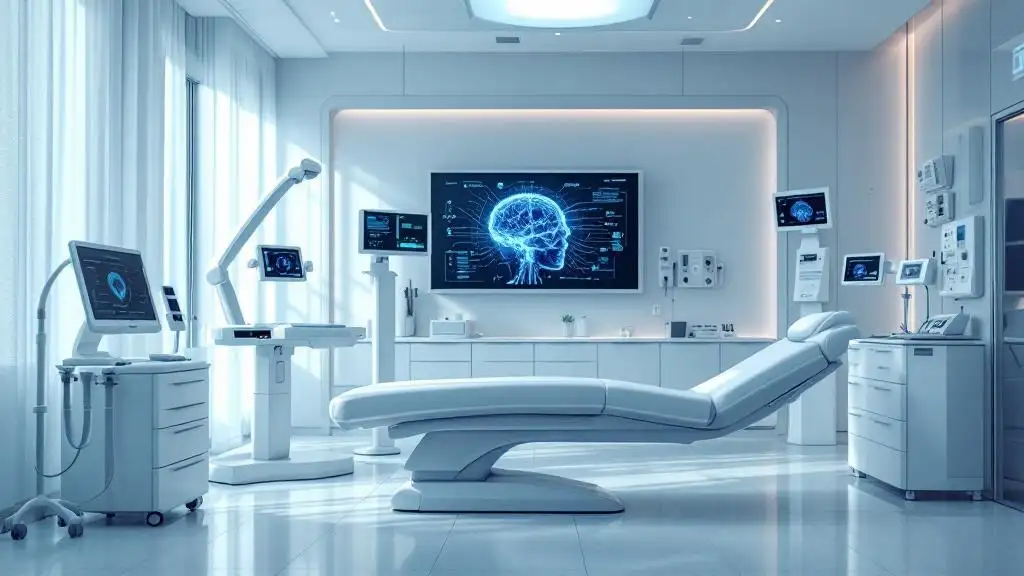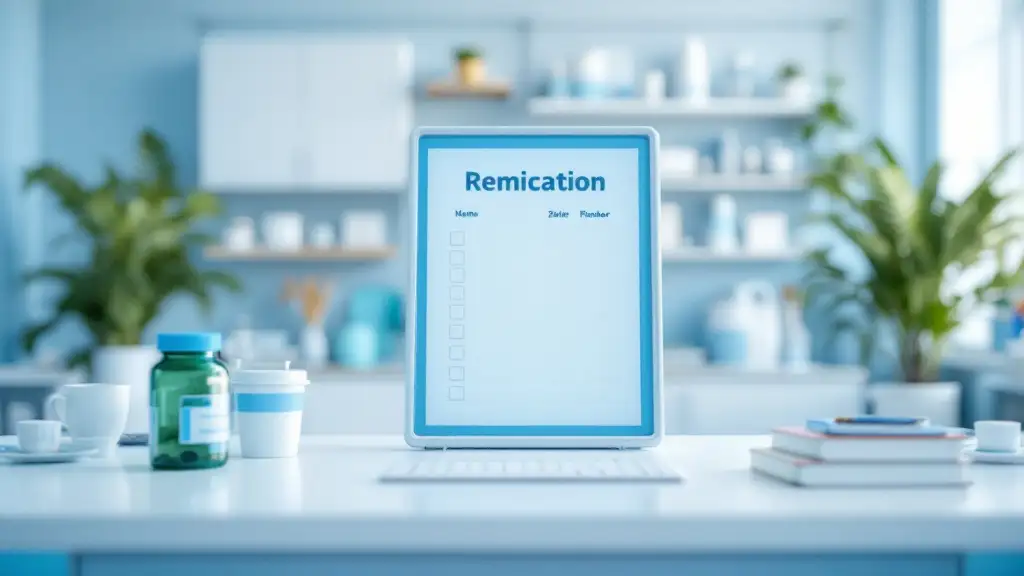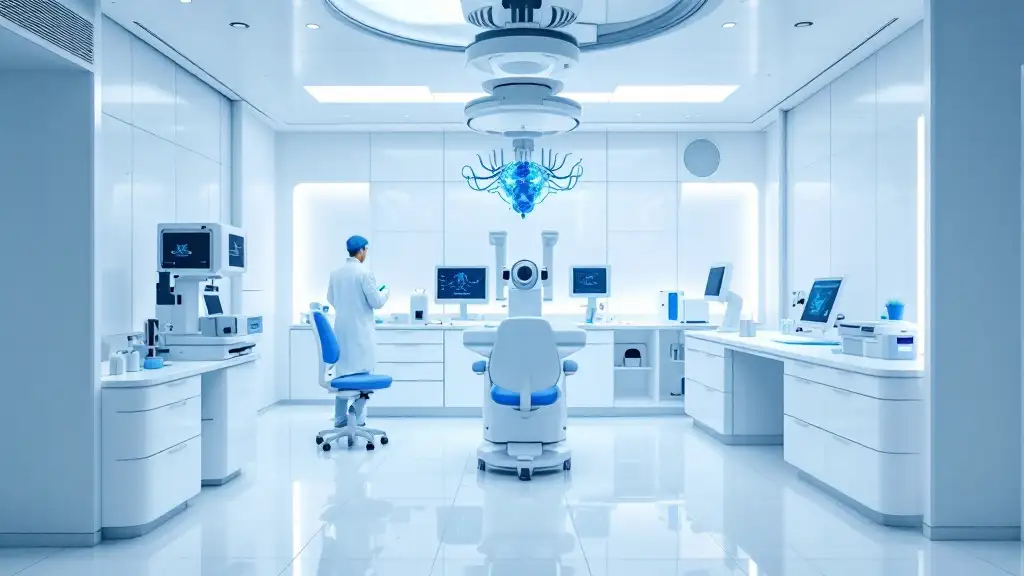Introduction to Transcranial Magnetic Stimulation
Transcranial magnetic stimulation (TMS) is a groundbreaking, non-invasive technique that uses magnetic fields to influence brain activity. Since its inception in the 1980s, TMS has evolved from a research tool to a clinically validated treatment for various neurological and psychiatric conditions. This article explores the scientific principles underpinning TMS, its physiological effects, technological basis, and the substantial evidence supporting its therapeutic efficacy.
Fundamental Physics of TMS
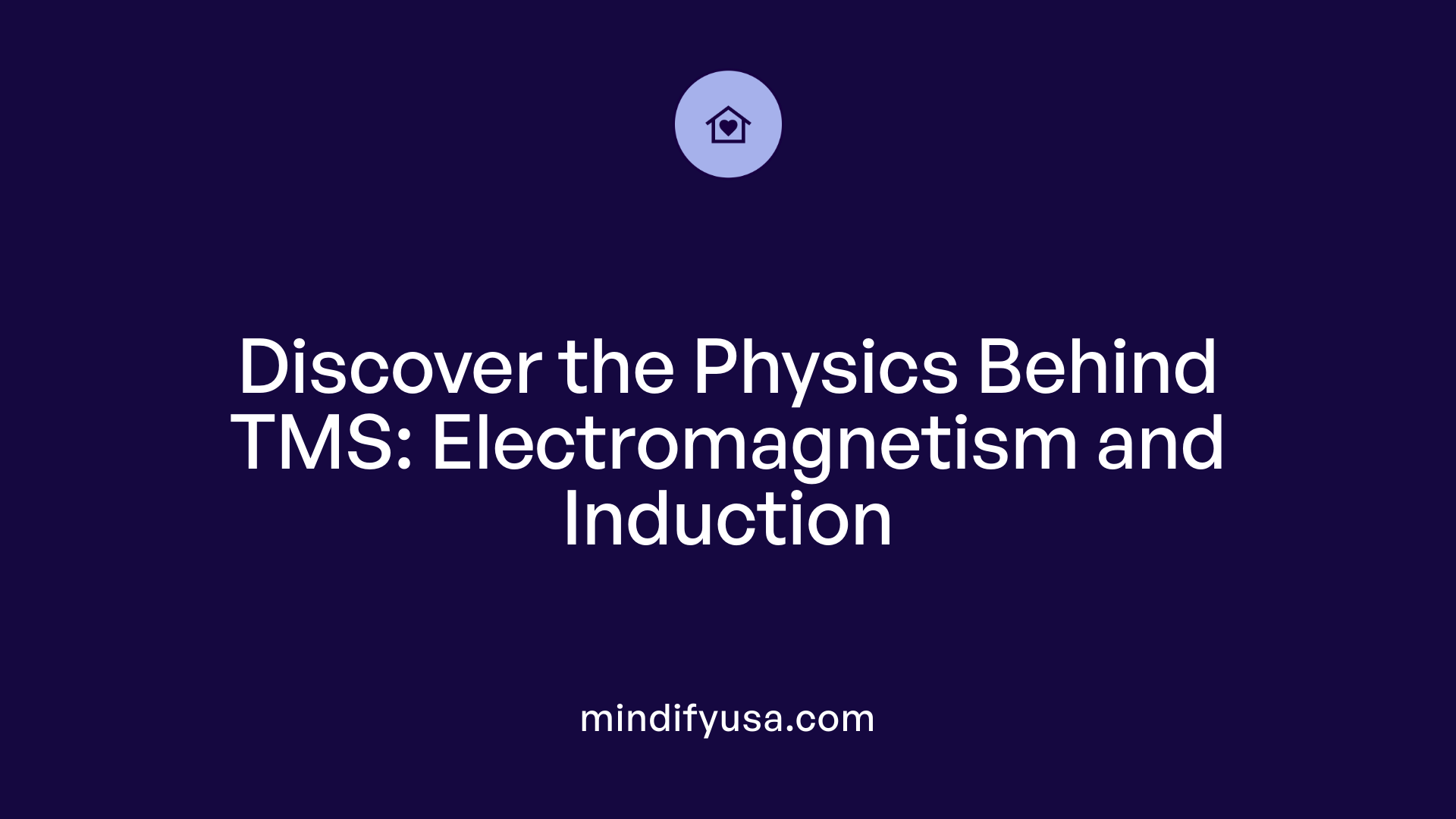 Transcranial magnetic stimulation (TMS) relies on core principles of physics—namely, electromagnetism—to influence the brain's electrical activity. The primary physical mechanism involves electromagnetic induction, a process where changing magnetic fields generate electric currents in conductive materials, such as brain tissue.
Transcranial magnetic stimulation (TMS) relies on core principles of physics—namely, electromagnetism—to influence the brain's electrical activity. The primary physical mechanism involves electromagnetic induction, a process where changing magnetic fields generate electric currents in conductive materials, such as brain tissue.
The process begins with the TMS coil, often shaped as a figure-eight for focused stimulation. When activated, the coil carries a rapid, high-intensity electric current. According to Faraday’s Law, this quickly changing current produces a transient magnetic field around the coil, which can reach strengths comparable to those used in MRI scans, around 2 Tesla.
This magnetic field penetrates the scalp and skull easily because magnetic fields are not significantly impeded by biological tissues. As the magnetic field passes through the brain tissues, it induces an electrical field within the brain’s conductive environment. This electric field causes ionic currents within neurons, leading to depolarization of neural membranes.
The induced electric currents depolarize neurons, triggering action potentials that alter neural activity. The pattern of stimulation—such as single pulses or repetitive pulses—determines whether neuronal excitability is increased or decreased, allowing TMS to modulate brain circuits involved in mood, cognition, or pain.
Faraday’s Law fundamentally underpins how TMS works. It states that a change in magnetic flux through a circuit induces an electromotive force (EMF). In TMS, the changing magnetic flux generated by the coil induces an electric field in the brain tissue, which is essential for activating neurons without any invasive procedures.
Overall, the physics of electromagnetic induction enables TMS to non-invasively target specific brain regions, opening pathways for research and therapeutic interventions in neuropsychiatric disorders.
Neural Activation and Modulation by TMS
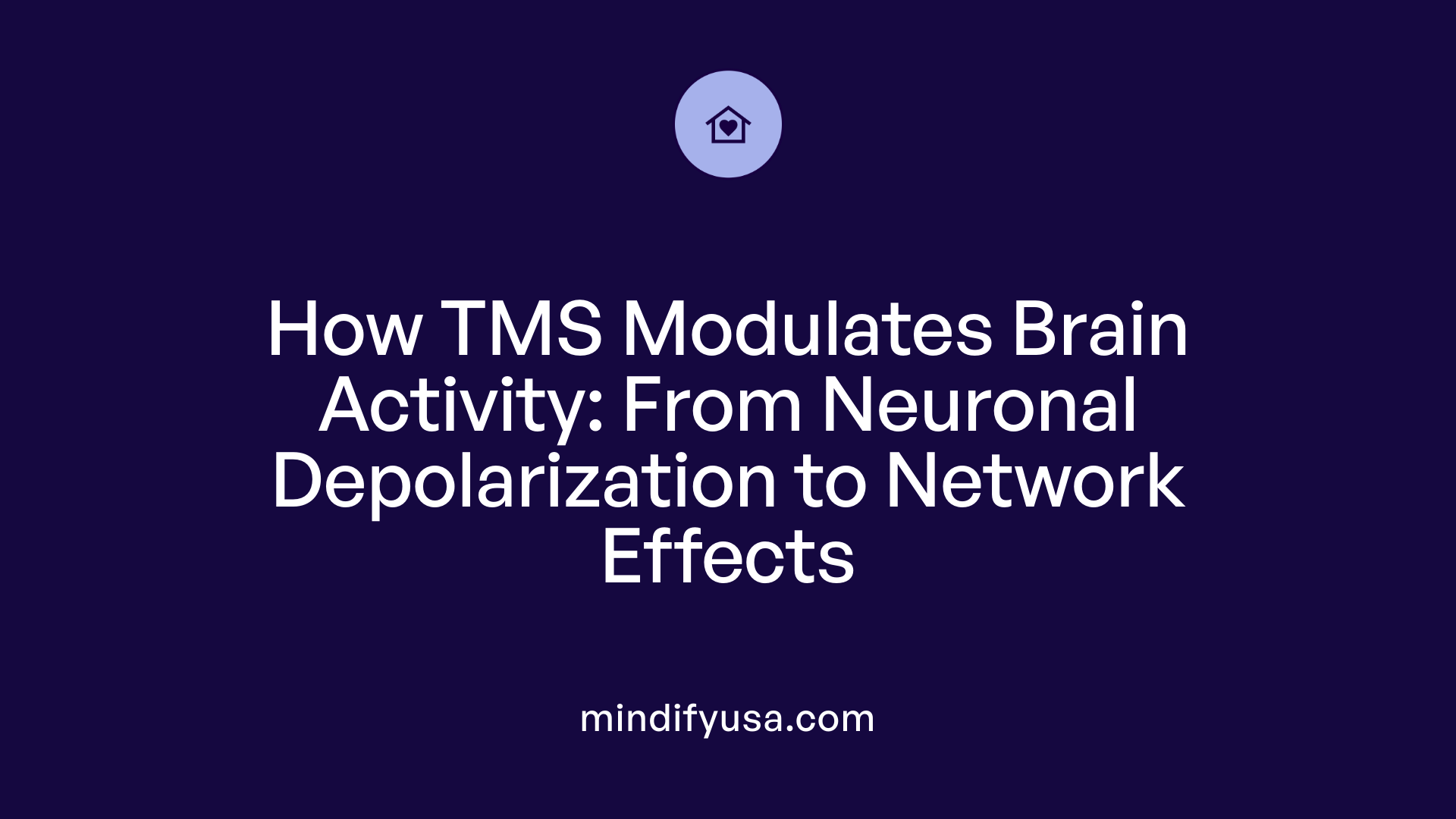
How does TMS influence neural activity?
Transcranial magnetic stimulation (TMS) affects neural activity primarily by inducing electrical currents in neurons located in the brain's superficial layers. When a magnetic pulse is applied, it causes neurons beneath the coil to depolarize—meaning their electrical charge shifts to make firing action potentials more likely. This process is driven by the electromagnetic induction created by TMS, which quickly alters membrane potentials in targeted cells.
The pattern—whether neurons become more or less active—depends on several factors, including the frequency, intensity, and duration of the pulses. High-frequency stimulation tends to increase neuronal excitability, promoting neural firing, while low-frequency pulses generally inhibit activity. These modulations are not isolated; they propagate through neural networks, influencing interconnected regions involved in various functions such as mood regulation, motor control, or sensory perception.
Electrical induction in neurons
The core principle behind TMS is the magnetic field's ability to produce an electric current in neurons—a phenomenon rooted in Faraday’s Law of electromagnetic induction. When the coil generates a rapidly changing magnetic field, it creates an electric field within the brain tissue beneath the coil. This electric field depolarizes neuronal membranes, triggering action potentials.
Neurons in the cortex have specific orientations and geometries that influence how they respond to TMS. For example, pyramidal neurons aligned parallel to the induced electric field are more likely to be activated. The electrical currents primarily stimulate the axons of neurons, which in turn activate connected neural circuits. This targeted induction is the foundation of TMS’s ability to modulate brain activity deliberately.
Effect of magnetic pulse parameters
The biological impact of TMS depends critically on the parameters of the magnetic pulses used. Variations in pulse strength, frequency, duration, and coil design allow precise modulation of neural excitability. For instance, fast repetitive pulses can induce long-term potentiation (LTP), strengthening synaptic connections, while slower pulses may facilitate long-term depression (LTD), weakening synaptic efficacy.
Moreover, certain protocols like theta burst stimulation (TBS) use bursts of high-frequency pulses to induce rapid changes in cortical excitability—either facilitation or inhibition—depending on the pattern used. The orientation and shape of the coil—such as the commonly used figure-eight coil—also influence the depth and focality of stimulation, affecting how electric fields interact with complex neural geometries.
Scientific studies have demonstrated that these parameters can modulate neurotransmitter release, alter blood flow, and induce measurable structural changes in the brain, all contributing to TMS’s therapeutic effects. This ability to tailor stimulation protocols underscores its versatility in treating various neurological and psychiatric conditions.
Technological Aspects of TMS Devices
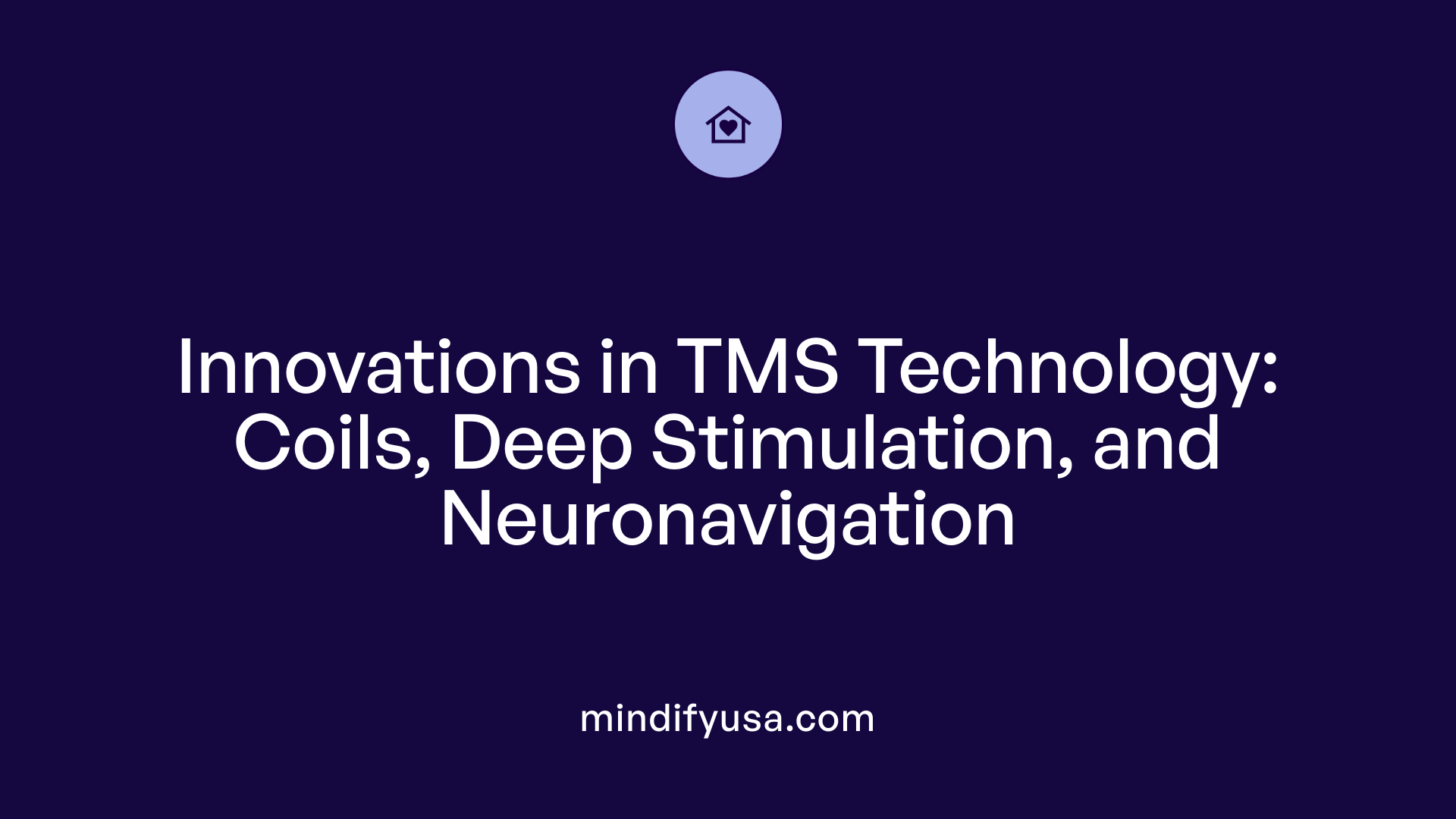
What is the physics of TMS and technology involved?
The physics of TMS is grounded in electromagnetic induction, a principle first described by Michael Faraday in 1831. In TMS devices, a coil—commonly a figure-eight design—carries a rapid, high-intensity electrical current. This current generates a strong magnetic field, approximately 2 Tesla in strength, which passes through the scalp and skull toward the brain tissue. According to Faraday's Law, this changing magnetic field induces a secondary electric current in the neurons beneath the coil. This electrical stimulation depolarizes neurons, causing them to fire and thereby modulate brain activity. Modern TMS hardware incorporates sophisticated control units that adjust pulse parameters including frequency, intensity, and waveform shape, allowing for tailored treatments suited to clinical and research needs.
How do coil design and placement influence TMS effects?
Coil design is crucial in determining the focality and depth of stimulation. The traditional figure-eight coil is designed to concentrate the magnetic field over a small, targeted area, typically affecting superficial regions about 2-3 centimeters below the surface. Its shape allows precise targeting of specific cortical structures, such as the dorsolateral prefrontal cortex in depression treatments.
In contrast, deep TMS utilizes specialized coils, such as H-coils, which feature broader and more complex windings. These coils generate magnetic fields capable of penetrating deeper into the brain—up to 6 centimeters—reaching subcortical regions involved in complex neural networks. Accurate coil placement, often guided by neuroimaging techniques like MRI, enhances treatment efficacy by ensuring the magnetic field stimulates the precise neural circuits responsible for symptoms or functions.
What technological advancements have improved TMS applications?
Recent technological progress has significantly expanded TMS’s therapeutic and research capabilities. MRI-guided neuronavigation systems allow clinicians to position coils with high accuracy, targeting specific brain areas based on individual neuroanatomy. Development of advanced coil designs, including H-coils, has enabled stimulation of deeper and wider brain regions, important for treating treatment-resistant depression and other disorders.
Furthermore, innovations in pulse waveforms, such as theta burst stimulation (TBS), deliver rapid bursts that produce faster and potentially more potent neuroplastic effects, often within minutes of treatment. Integration with imaging techniques allows for real-time monitoring of brain responses, optimizing stimulation protocols. These advancements facilitate personalized treatment plans and broaden the spectrum of neurological and psychiatric conditions that TMS can address effectively.
| Aspect | Description | Impact on Therapy |
|---|---|---|
| Coil Types | Figure-eight, H-coils, other specialized designs | Determine depth and focality of stimulation |
| Depth of Stimulation | 2-3 cm for focal, up to 6 cm for deep TMS | Target superficial or deep brain structures |
| Stimulus Waveforms | Monophasic, biphasic, theta burst | Influence the strength and speed of neuromodulation |
Exploring these technological features continues to enhance TMS’s precision, safety, and effectiveness across various clinical applications.
Biological and Neuroscience Foundations of TMS
 Transcranial magnetic stimulation (TMS) exerts its effects on the brain by modulating neural excitability and facilitating synaptic plasticity through electromagnetic induction. When a magnetic pulse is delivered via a coil placed on the scalp, it generates a rapidly changing magnetic field that induces an electric current in underlying neurons. This current can depolarize neurons, making them more or less likely to fire, depending on the stimulation parameters.
Transcranial magnetic stimulation (TMS) exerts its effects on the brain by modulating neural excitability and facilitating synaptic plasticity through electromagnetic induction. When a magnetic pulse is delivered via a coil placed on the scalp, it generates a rapidly changing magnetic field that induces an electric current in underlying neurons. This current can depolarize neurons, making them more or less likely to fire, depending on the stimulation parameters.
A critical aspect of TMS’s impact on the brain involves influencing neurotransmitter systems. Studies have shown that TMS increases the release of key neurotransmitters such as serotonin, dopamine, and gamma-aminobutyric acid (GABA). These chemicals are essential for regulating mood, anxiety, and cognitive functions. For instance, boosting serotonin and dopamine levels helps improve mood and motivation, which is why TMS is effective in treating depression.
Neuroplasticity, the brain’s ability to reorganize its neural connections, plays a pivotal role in how TMS produces long-term therapeutic benefits. Through mechanisms like long-term potentiation (LTP) and long-term depression (LTD), TMS strengthens or weakens synapses, leading to the formation of new neural pathways or the reorganization of existing ones. Repetitive TMS (rTMS) protocols are designed to induce these changes, promoting lasting improvements in brain function.
Furthermore, TMS influences broader brain networks by altering how different regions communicate. For example, stimulating the dorsolateral prefrontal cortex (DLPFC) can modulate activity in the limbic system, which is heavily involved in emotion regulation. Neuroimaging studies, including functional MRI, reveal that TMS changes blood flow and connectivity patterns in these networks, aligning with clinical symptom improvements.
In summary, the biological foundation of TMS involves a complex interplay between direct neuronal depolarization, neurotransmitter regulation, and network connectivity adjustments. These mechanisms underpin its ability to promote neuroplasticity and restore functional balance in neural circuits associated with mood, cognition, and behavior, making it a versatile tool in neuropsychiatric treatments.
Repetition and Protocols in TMS Treatment
How does repetitive TMS (rTMS) treatment work?
Repetitive TMS (rTMS) functions by delivering focused magnetic pulses at specific frequencies—typically 1Hz for inhibitory effects or 10Hz and above for excitatory effects—through a coil placed on the scalp targeting particular brain areas. These magnetic pulses induce electrical currents within the brain tissue, leading to depolarization of neurons. This process modulates neural activity within circuits involved in mood regulation, cognition, and emotion.
Over multiple sessions spanning several weeks, these induced changes promote neuroplasticity, similar to mechanisms like long-term potentiation (LTP) and long-term depression (LTD). This stimulation influences neurotransmitter systems and gene expression, helping to restore normal brain function. As a result, patients often experience sustained improvements in symptoms of depression and other disorders.
What are different TMS protocols and their effects?
TMS protocols differ mainly based on their frequency, pattern, and duration of stimulation. High-frequency stimulation, generally above 5Hz, tends to enhance cortical excitability and facilitate neural circuits. Conversely, low-frequency stimulation, below 1Hz, usually reduces cortical activity, helpful in conditions involving hyperactivity.
Multimodal patterned protocols include theta burst stimulation (TBS), which can be administered as intermittent TBS (iTBS) to increase excitability or continuous TBS (cTBS) to decrease it. These are designed for rapid interventions and shorter treatment durations.
Paired associative stimulation (PAS) involves synchronizing peripheral nerve stimulation with cortical TMS pulses based on Hebbian principles, strengthening specific neural pathways. These varied protocols tailor the therapeutic approach depending on disorder type and neural responsiveness.
What is the duration and frequency of typical TMS treatment courses?
Standard TMS treatment usually consists of daily sessions lasting approximately 20 to 40 minutes each, administered over four to six weeks, amounting to about 20 to 30 sessions in total. The initial phase includes a mapping process to locate optimal coil placement and determine appropriate stimulation intensity.
While traditional protocols extend over several weeks, emerging accelerated protocols like theta burst stimulation aim to deliver effective treatment in a shorter timeframe by increasing stimulation intensity or optimizing pattern parameters. Although effects may take a few weeks to become fully apparent, ongoing research continues to refine these protocols for quicker and more efficient relief.
Historical Milestones and Future Directions
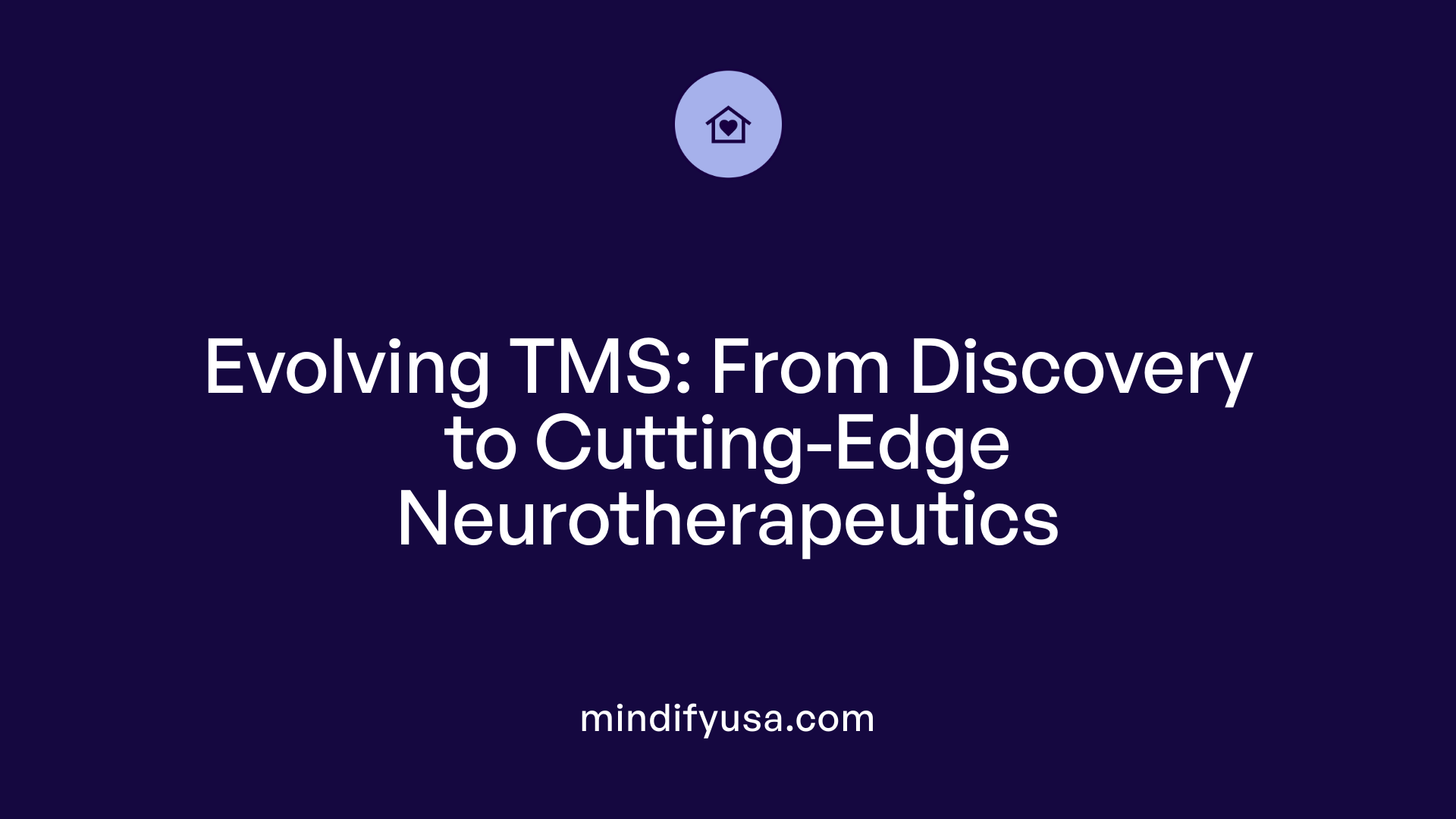
How has the development of TMS technology evolved over the years?
The development of transcranial magnetic stimulation (TMS) technology has a rich history rooted in basic physics research on electricity and magnetism. The first experiments involving magnetic fields impacting neurons occurred over a century ago, but the modern era of TMS began in the 1980s. Pioneered by researchers like Dr. Anthony Barker, the initial devices were primarily used for diagnostic purposes and basic neurological research.
Over time, scientists developed specialized coils, such as the figure-eight coil, allowing for more focal stimulation of specific brain areas. This precision in targeting has been essential for expanding TMS's therapeutic potential. Advances in MRI-guided techniques have further refined the accuracy of coil placement, increasing treatment effectiveness.
In the late 2000s, TMS received FDA approval for treating major depression, marking a significant milestone in its clinical adoption. Subsequent innovations include deep TMS technology, which uses H-coils to reach deeper brain regions beyond the superficial cortex, and protocols like theta burst stimulation that achieve faster results with fewer side effects.
Clinically, the integration of neuroimaging and personalized treatment planning has boosted confidence in TMS's efficacy. Today, ongoing research explores its uses in conditions such as OCD, PTSD, and neurodegenerative diseases, promising a vibrant future for this non-invasive neuromodulation technique.
Conclusion and Outlook on TMS
Transcranial magnetic stimulation represents a remarkable convergence of physics, neuroscience, and clinical innovation. Its ability to non-invasively induce electrical currents in the brain, influence neural plasticity, and modulate brain networks has established it as an effective, safe, and legitimate treatment for conditions like depression and OCD. While the full scope of its biological mechanisms continues to be elucidated, ongoing research and technological refinement promise to expand its applications. As personalized protocols and combined neuroimaging approaches evolve, TMS is poised to become an even more integral part of neuropsychiatric treatment paradigms, offering hope to millions worldwide.
References
- Transcranial magnetic stimulation - Mayo Clinic
- How does transcranial magnetic stimulation modify neuronal activity ...
- Zhi-De Deng: Transcranial Magnetic Stimulation: Physics, Devices ...
- TMS (Transcranial Magnetic Stimulation): What It Is - Cleveland Clinic
- Transcranial magnetic stimulation - Wikipedia
- Deep TMS: A Closer Look at the Science Behind the Technology
- Basic principles of transcranial magnetic stimulation (TMS) and ...





















